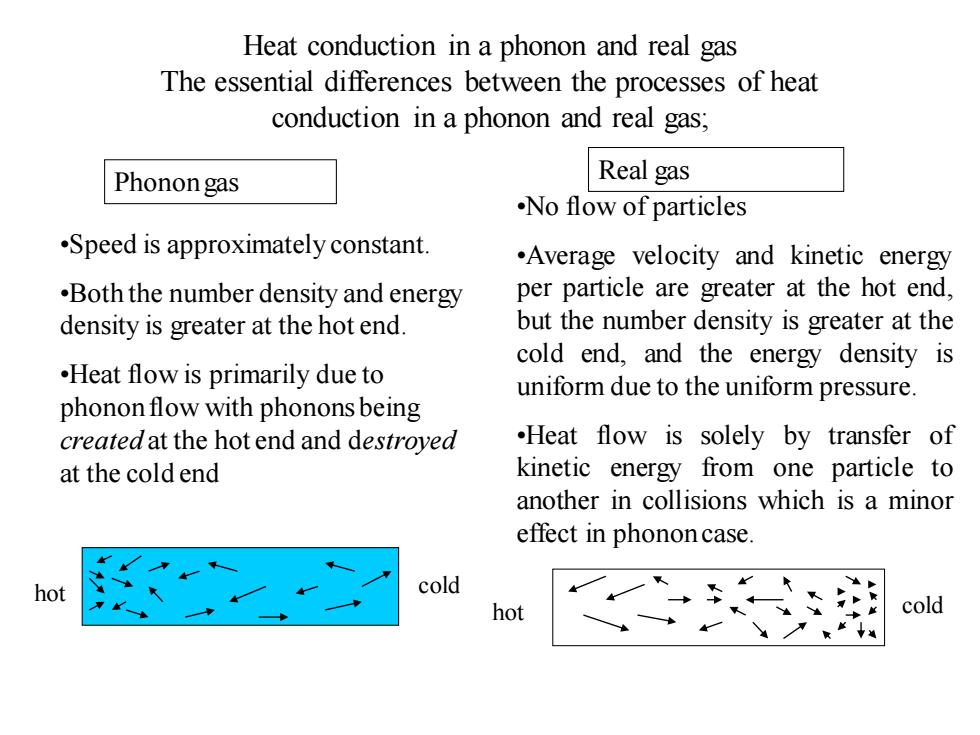
Heat conduction in a phonon and real gas The essential differences between the processes of heat conduction in a phonon and real gas; Phonon gas Real gas .No flow of particles .Speed is approximately constant. .Average velocity and kinetic energy .Both the number density and energy per particle are greater at the hot end, density is greater at the hot end. but the number density is greater at the cold end,and the energy density is .Heat flow is primarily due to uniform due to the uniform pressure. phonon flow with phonons being created at the hot end and destroyed .Heat flow is solely by transfer of at the cold end kinetic energy from one particle to another in collisions which is a minor effect in phononcase. hot cold hot cold
Heat conduction in a phonon and real gas The essential differences between the processes of heat conduction in a phonon and real gas; Phonon gas Real gas •Speed is approximately constant. •Both the number density and energy density is greater at the hot end. •Heat flow is primarily due to phonon flow with phonons being created at the hot end and destroyed at the cold end •No flow of particles •Average velocity and kinetic energy per particle are greater at the hot end, but the number density is greater at the cold end, and the energy density is uniform due to the uniform pressure. •Heat flow is solely by transfer of kinetic energy from one particle to another in collisions which is a minor effect in phonon case. hot cold hot cold

Temperature dependence of thermal conductivity K K Approximately equal to 3 velocity of sound and so Vanishes exponentially at temperature independent. low T's and tends to classical value at higlT's .Temperature dependence of phonon mean free length is determined by phonon-phonon collisions at low temperatures .Since the heat flow is associated with a flow of phonons,the most effective collisions for limiting the flow are those in which the phonon group velocity is reversed.It is the Umklapp processes that have this property,and these are important in limiting the thermal conductivity
Temperature dependence of thermal conductivity K _ 1 3 K l C = Approximately equal to velocity of sound and so temperature independent. Vanishes exponentially at low T’s and tends to classical value at high T’s B k ? •Temperature dependence of phonon mean free length is determined by phonon-phonon collisions at low temperatures •Since the heat flow is associated with a flow of phonons, the most effective collisions for limiting the flow are those in which the phonon group velocity is reversed. It is the Umklapp processes that have this property, and these are important in limiting the thermal conductivity